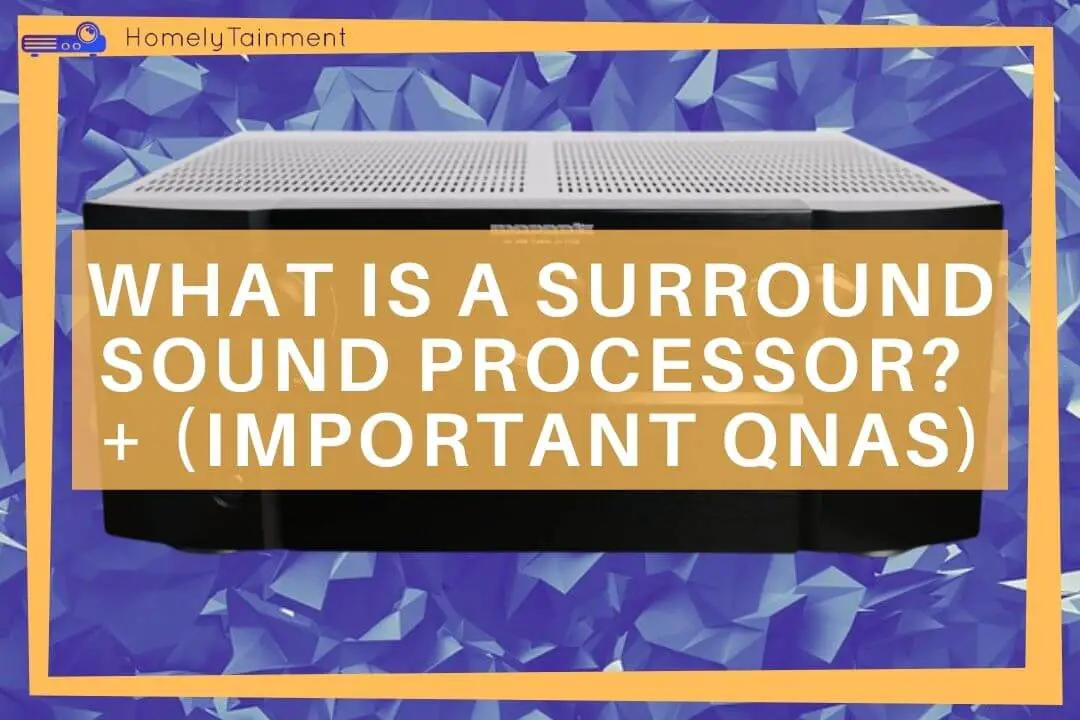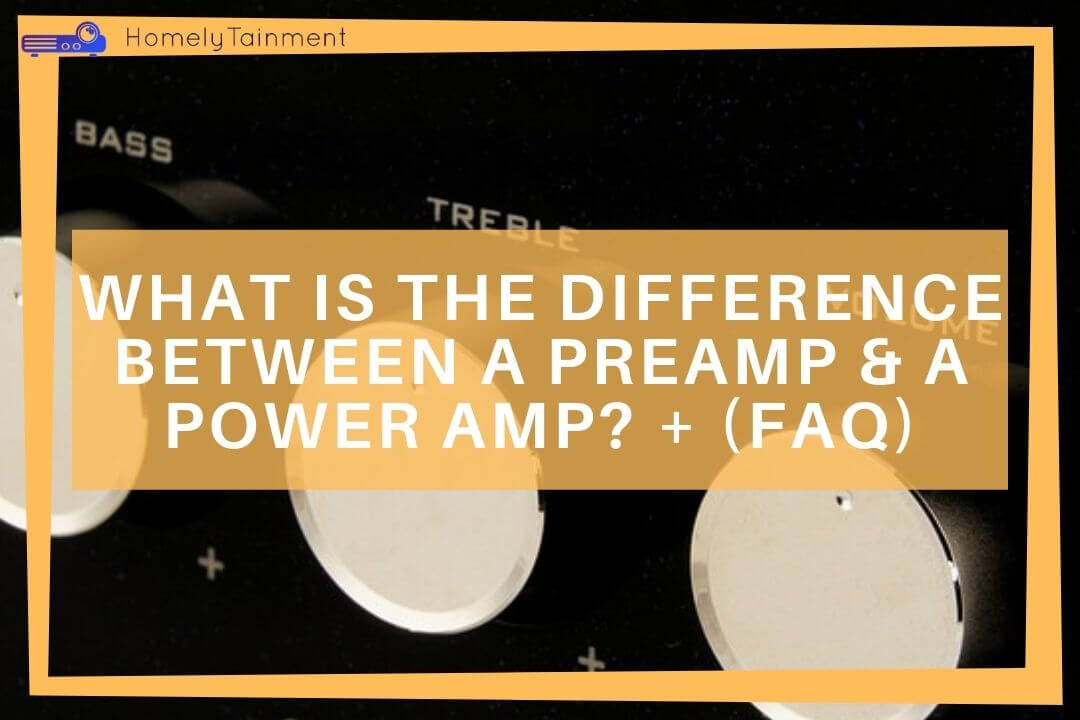
Homelytainment earn commissions (at no additional cost to you) if you purchase products from retailers after clicking on a link from our site.
This is the topic for those who love to have separated in their home theater instead of AV receivers. The separates are for pro-level home theater owners. That’s why I will try to explain this with more precision. So, what is a surround sound processor?
At A Glance: Surround sound processors amplify incoming audio signals so they can be worked on properly by the amplifier and refine video to be shown by display properly.
Keep reading as we will discuss many more sides of the processor. How it works and which to choose for your job.
What does a processor do for a home theater?

In-Short: A processor keeps the audio in the best possible shape and also keeps speakers in good health.
In-Depth: How does it do this? The processor is the first step for the audio signals before entering the amplifier. And the amplifier can’t work properly on weak signals. This amplifier is responsible for driving the speakers with power.
When the amplifier gets low-level signals. It becomes hard for it to give a nice shape to these signals. Because the amplifier can’t grip them very well for their work. So, the amplifier pushes these clipped signals to the speakers.
The speakers find it hard to produce sound from these clipped signals. They heat faster and produce unnatural sounds. Also, they age faster by creating sound over and over again from clipped signals.
The processor amplifies the incoming signals to at least 3.5 Volts so the amplifier can get signals which it wishes for. The amplifier then pushes these clean signals to speakers and the speakers last longer and produces a natural sound.
With refining audio, the processor also works on the incoming video signals and pushes them to a display attached.
They can work on 4K to 8K with newer processors and supports all the major formats like HDR and Dolby vision and also supports 3D.
Read my this guide about the best preamp/processor for home theater. You will know which factors make the best.
How does a surround sound processor work?
In-Short: The processor handles all the input media sources and converts digital signals into analog so they can be changed into object base audio or surround audio and the video signals to be converted into pixels when shown on display.
In-Depth: All the inputs such as the gaming console, Blu-ray player, and Dish TV are connected to the processor. The processor is continuously fed with signals by these devices. The processor’s job is to work on these signals and deliver them to their destinations.
These signals are digital and the processor converts these signals to analog means to convert them to electric charges. These analog signals can be given the shape of object-based audio such as Dolby Atmos or to CD version sound of surround sound.
The processor also provides volume controls for the surround sound.
Also, almost all of the processors have balanced audio outputs. Balance means they have negative, positive, and a ground terminal for output ports. They transfer these electric interference-free signals to the amplifier. These signals sound better and more immersive than regular output ports. Also, at the time when I am writing this article. No AV receiver provides these balanced XLR output ports.
The signals go from XLR processor ports to amplifiers and from there to speakers. They then sound natural, fuller, deep, immersive, and tight.
The processor completely transforms the surround sound audio into an immersive phenomenon. You will find the audio flowing all over and around you in the theater room.
When there is no processor to work on the audio, then the whole audio doesn’t sound immersive like when the processor works on it.
I was from that league that did not consider processors better than AV receivers. But when my audiophile friend forced me to listen to his home theater audio. My whole perspective towards separates and processors. The same movie audio was immersive and fuller than I have ever experienced before with an AV receiver.
Know how to optimize the audio of home theater. You will have complete immersive sound after applying this.
9.1.4, 7.1, or 5.1 surround processor: Let’s Discuss The Difference
Each processor is designed to support a specific amount of channels. These channels are identified by numerical numbers. Like in the first number before the point identify the numbers of speakers it supports and the number after the point shows the number of subwoofers it supports and the number after the second point shows the number of Dolby Atmos speakers they support.
9.1.4 Channels Processor
This process supports a total of 14 channels. The first 9 speakers are on the ground with a single subwoofer. The other 4 are in-ceiling speakers for Dolby Atmos.
The 9 speakers will be arranged as the front LCR speakers. The center, left, and right speakers. 2 will be wide right, and left speakers. Two will be surrounded sides and two will be rear speakers and 1 subwoofer will be used.
The rear speakers go at the back of the audience.
How to place speakers in home theater for the best sound possible. Know from my this guide.
7.1 Channels Processor
This processor supports a total of 8 channels. 7 Speakers on the ground with a sub.
The 3 will be the front LCR speakers and 2 will be the surround sides and 2 will be rear speakers.
Know when to replace your speakers to have a fresh audio experience throughout your life. Know from my this guide.
5.1 Channels Processor
This processor consists of a total of 6 channels. The 5 speakers will be on the ground with a subwoofer.
3 speakers will be in front LCR and 2 speakers will be used in the surround sides or the rear.
Did you get something out of this surround sound processor guide? Hold On We Have Something Exciting To Share.
[the_ad id=”4771″]FAQs
What is the difference between an AV receiver and a processor?
The AV receiver has a preamp, amplifier, and video processing system built-in. The AV receiver works on both video and audio.
The processor has only a preamp and video processing system built in. The processor doesn’t have an amplifier.
Are separates better than integrated?
Separates are always better than integrated. The integrated ones don’t have that much huge hardware that can work on high levels of audio and video. Everything is fitted into one box.
While the separates have huge hardware that has huge power to work on high levels of audio and video.
The separates can drive a lot of channels with comfort as compared to integrated. The integrated sometimes can’t drive even 3 channels with that much force as separates do with 11 channels or more.
Does an integrated amp need a preamp?
The integrated amp has its own preamp built into it. That’s why they don’t need an external separate preamp to help them out in the audio processing.
Helpful Resources For The FAQs To Read More
- This is was my opinion, read more about it from this discussion on AVSforum. (Resource for the first answer)
- This was my opinion, read more about it here on Stereophile. (Resource for the second answer)
- But if you want to connect a preamp to an integrated amp then read this discussion on SteveHoffman. (Resource for the third answer)




